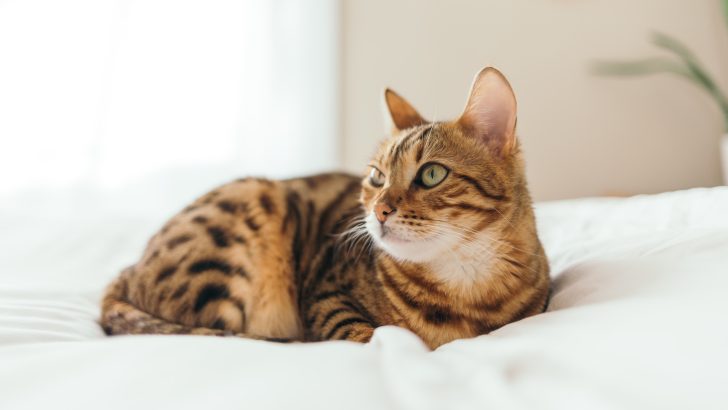“Why does she do that!?” you can’t help but wonder whether you’ve done something wrong. “She’s got everything she needs, from affection and appreciation to delicious foods and engaging toys! Why does she act that way, then!?” you don’t want to accept that you don’t really know how to discipline a Bengal cat.
And boy, there’s something familiar about what you’re going through! There’s a friend of mine (a foster pet parent) who had the pleasure of dealing with a Bengal cat with behavioral disturbances galore. Trust me, there are tales to testify of the things he went through.
She absolutely adored destroying everything while he wasn’t home. He would leave for work unaware of the horror that was about to ensue, only to come back to broken decorations, damaged coffee tables, and disfigured throw blankets. He would blame everything on the fact that he wasn’t around.
She savored the times she managed to scratch her way through the kitchen cabinets before he would catch her red-handed and punish her for life. She was the queen of refusing to eat, pushing the sand out of her litter box, and meowing everyone’s ears off.
But he didn’t know how to deal with her even though he spent years and years fostering cats. Little did he know that Bengal cats have an unpredictable wild side that comes out now and then. And, little did he know that Bengals have heightened emotional and physical needs that have to be met (or else).
1. Make your Bengal cat’s environment engaging enough

Bengals can be pretty challenging to handle when you don’t understand where the bad behavior originates from. And, these beautiful beats are adventurous. They crave running through the forest, climbing up trees, hopping over rocks, and chasing after animals.
But, they can’t do these things! Rather than running off and starting a new life, they try climbing on shelves, knocking things down, scratching the furniture, and destroying everything they can, hoping to get the same fulfillment. Therefore, chances are your Bengal cat doesn’t annoy you on purpose.
And, you can change (or rather redirect) that natural drive! Before you do anything else, ensure she’s getting enough physical activity regularly. Once you’ve done that, observe any annoying behavior and provide her with an alternative.
For example, when she keeps hopping on the highest shelves, surprise her with a perch placed at the same height. This one from SweetGO is a great affordable option.
If she doesn’t leap at the opportunity, try rubbing her favorite scents on the perch. Chances are, she’s going to adore the spot the moment that she gets comfortable.
2. Make the things you don’t want her to touch repulsive
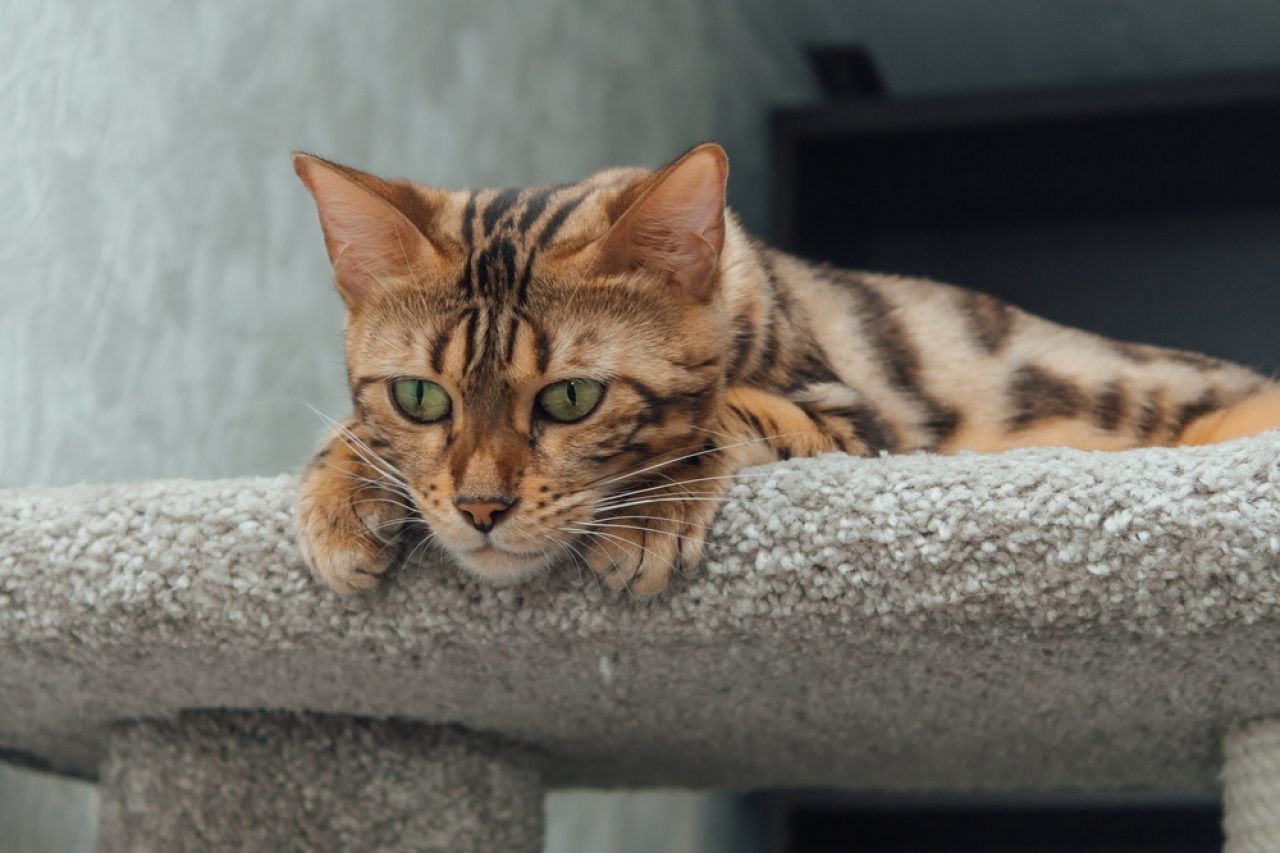
Quite the opposite of the strategy we discussed a moment ago, right? But that’s why these two would work purrfectly together to make sure your Bengal cat understands the difference between “go ahead” and “stop right there.” We gave you some clues for the “go ahead” part, now we can move on to the latter.
Now, there’s always a pawsibility that you might have encouraged bad behavior without knowing. Maybe you bribed her with treats when she wouldn’t stop waiting outside your bedroom door, meowing for you to open them.
Maybe you’ve cuddled her every time she would knock things down trying to get your attention. Whatever the case might be, there’s something you can do to reverse the damage.
First things first, you can try spraying your bedroom door with a scent she can’t stand (commercially available citrus sprays can do the trick). Make sure you don’t use lemons or limes – they’re toxic to cats!
You could also try putting chunks of aluminum foil or sticky tape on top of the shelves because cats really, really hate them. It might make your apartment look nothing like those Pinterest mood boards – but could be worth a try.
3. Don’t encourage bad behavior, but reward good behavior

There’s hardly anything worse than encouraging bad behavior and failing to reward good behavior. That’s a sure path toward making your Bengal cat believe she can do whatever she wants.
We know you don’t want your kitty feeling bad because of something you’ve done, and here’s what you do to avoid that.
What do we mean when we say that you shouldn’t encourage bad behavior? We’re not saying you should punish your Bengal when she does something she shouldn’t. Quite on the contrary, you should act the way you always do, go on with your day, and avoid giving her the attention she’s seeking.
On the other hand, when she does something right, make sure you provide her with praise, treats, and other means of showing her you appreciate whatever she’s done.
When she climbs on her tree rather than your kitchen shelves, surprise her with a treat. When she walks past your porcelain figurines and doesn’t knock them down, cuddle her and make sure she knows she’s a good girl. Who wouldn’t love that!?
4. Wear your Bengal cat out before she does something naughty

Bengals are brimming with energy! And, we’re not surprised considering these beautiful beasts departed from the wilderness only a couple of decades ago. Bengals absolutely adore running around the apartment (or the outdoors), chasing after butterflies, and hanging out with humans.
Not to mention that Bengals love playing with cats, too! They’re the happiest when they have another Bengal BFF. Whether you adopt another cat for her to play with or you set up play dates with your friends’ cats, she’s going to freak out (in a good way).
Whatever you decide to do, make sure your Bengal gets as much playtime as she needs.
When a Bengal doesn’t release the excess energy she has, she throws tantrums, knocks things down, and scratches her way through your apartment to get your attention. “Mom, I need something to do right meow!” Whoever thought human teenagers were annoying clearly never owned a Bengal!
5. Divert her attention to something other than the thing she wants to destroy
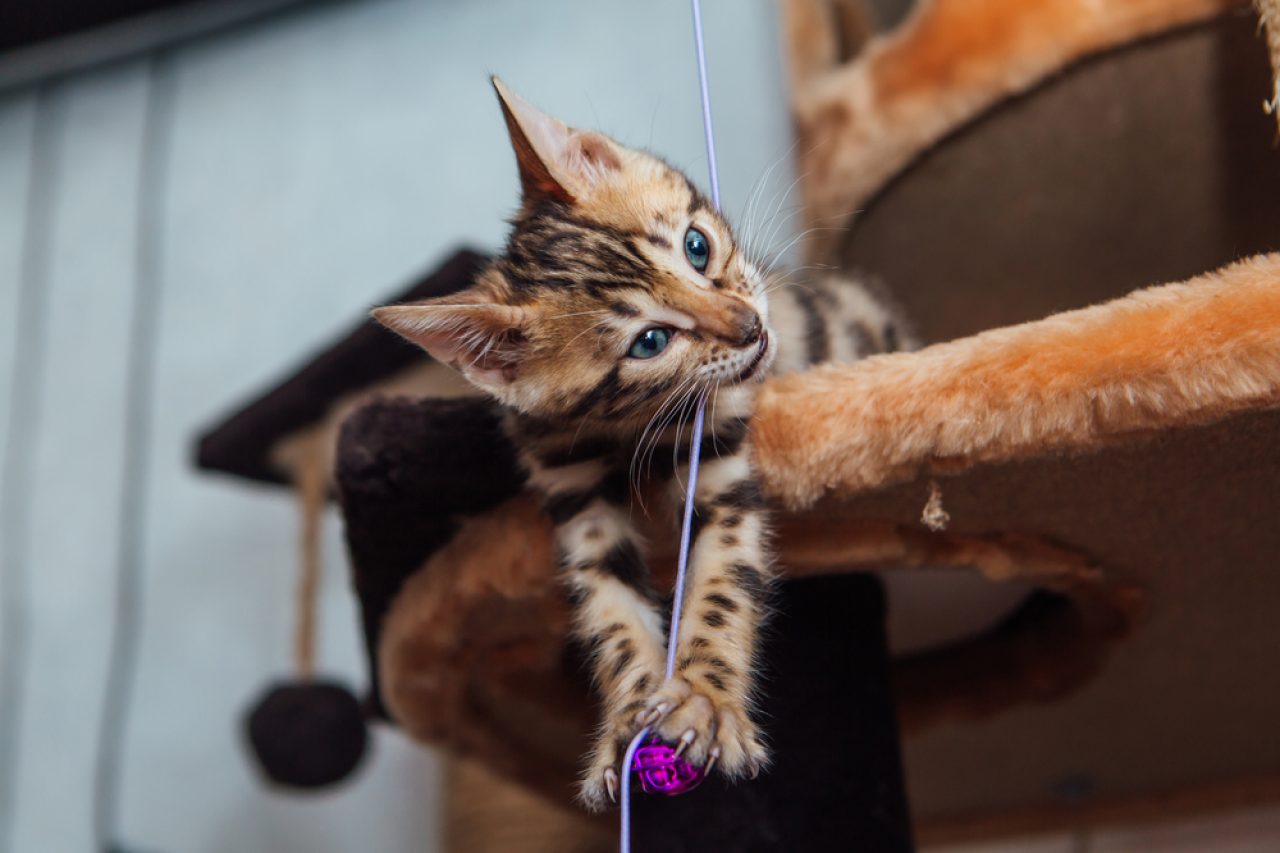
Now, once you wear her out, you won’t even need to discipline your Bengal cat. Trust me, she’s going to sleep for the rest of the day (or shy away from any human contact).
But, should she be a tough cookie to crack, you might want to divert her attention to something other than the thing she wants to destroy.
So, when you notice her little butt shaking from side to side and the blacks of her eyes becoming wider, make your move. Offer her something more interesting than what she was planning on doing.
Playing with her favorite toy might be more interesting than scratching your couch. And, cuddling with you might be more interesting than pawing at your houseplant.
As a matter of fact, distracting her works great because you’re not encouraging the bad behavior while you’re (at the same time) offering her something a lot better. And, you’re teaching her that she doesn’t need to do those things that make mommy angry when there are other, better things to do with her time.
6. Don’t spray her with water, you’re going to make things worse

You wouldn’t believe the number of pet parents who believe disciplining their precious purrincess means punishing her, spanking her, or spraying her with water whenever she does something wrong.
While she might respond the way you want her to at first (back off, walk away, or something of the sort), she’s bound to make things worse later on.
Why do we say that? Cats learn things differently than humans. But they’re pretty similar when it comes to the whole “do something wrong, get punished” thing.
When you punish them for something they’ve done, they’re only going to find a way to do the same thing when you’re not around (or to do something worse).
Not only that, but they are going to associate you with negative feelings (yes, your adorable, little Bengal might grow to resent you the way you resent your parents or your siblings).
7. Make sure your Bengal cat understands the meaning of “yes” and “no”

When you’re trying to discipline your Bengal cat, you might need to look at the bigger picture. What are the reasons behind her behavior? Does she break things and scratch your furniture because she’s aggressive or because she doesn’t know it’s something she shouldn’t do?
Sure, you shouldn’t put (too much) emphasis on her bad behavior. But, that’s not to say that you shouldn’t teach her what’s right and what’s wrong.
If you’ve never scolded her or punished her for something she’s done, she might not be aware that “breaking mommy’s jewelry box gets you in trouble.”
Practice the meaning behind “yes” and “no” with her. Whenever she understands something or does something right, reward her with a treat. That’s pretty much the best way for her to understand what you’re asking her to do and what you’re forbidding her from doing.
Practice, practice, and more practice should get you where you want to be!
8. Make sure she has someone to play with when you’re not around
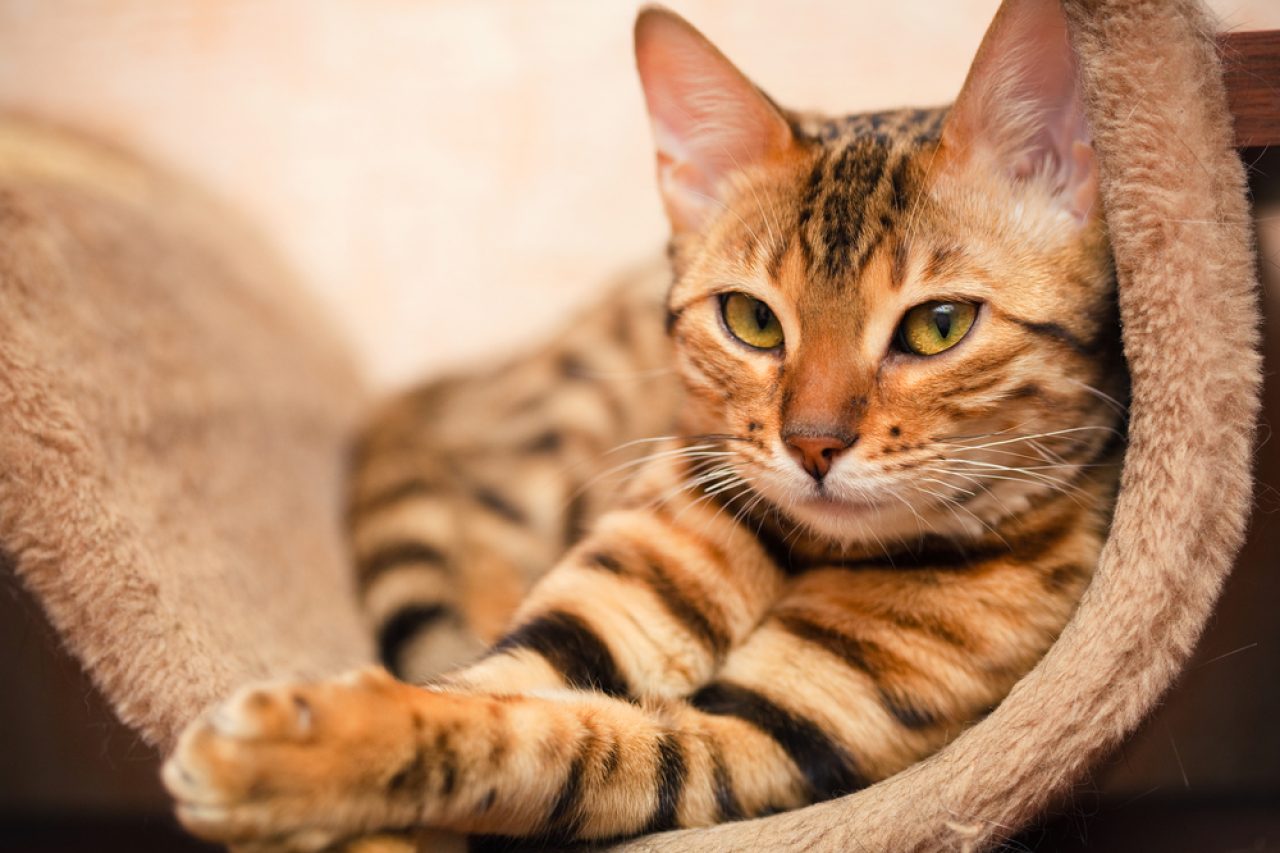
“Cats need companions!” Repeat that a couple of times to make sure we’re on the same page. Kidding aside, Bengal cats might look like they could devour another kitty within seconds. But, they’re as friendly and playful as they come.
And, Bengal cats absolutely adore having another kitty around to cause trouble with. They need someone to take the blame!
When trying to figure out how to discipline a Bengal cat, consider the pawsibility that she’s throwing tantrums because she needs somebody to spend time with (somebody that’s not as human as you are).
Getting another kitty might not be everybody’s option (or cup of tea) and there’s nothing wrong with that. If that’s the case, consider arranging playdates with your friends’ cats or teaching her to walk on a leash and taking her to the park.
While having a companion 24/7 might be the better choice, getting her a part-time bestie should make a difference, too.
9. Don’t forget to provide her with plenty of affection and appreciation
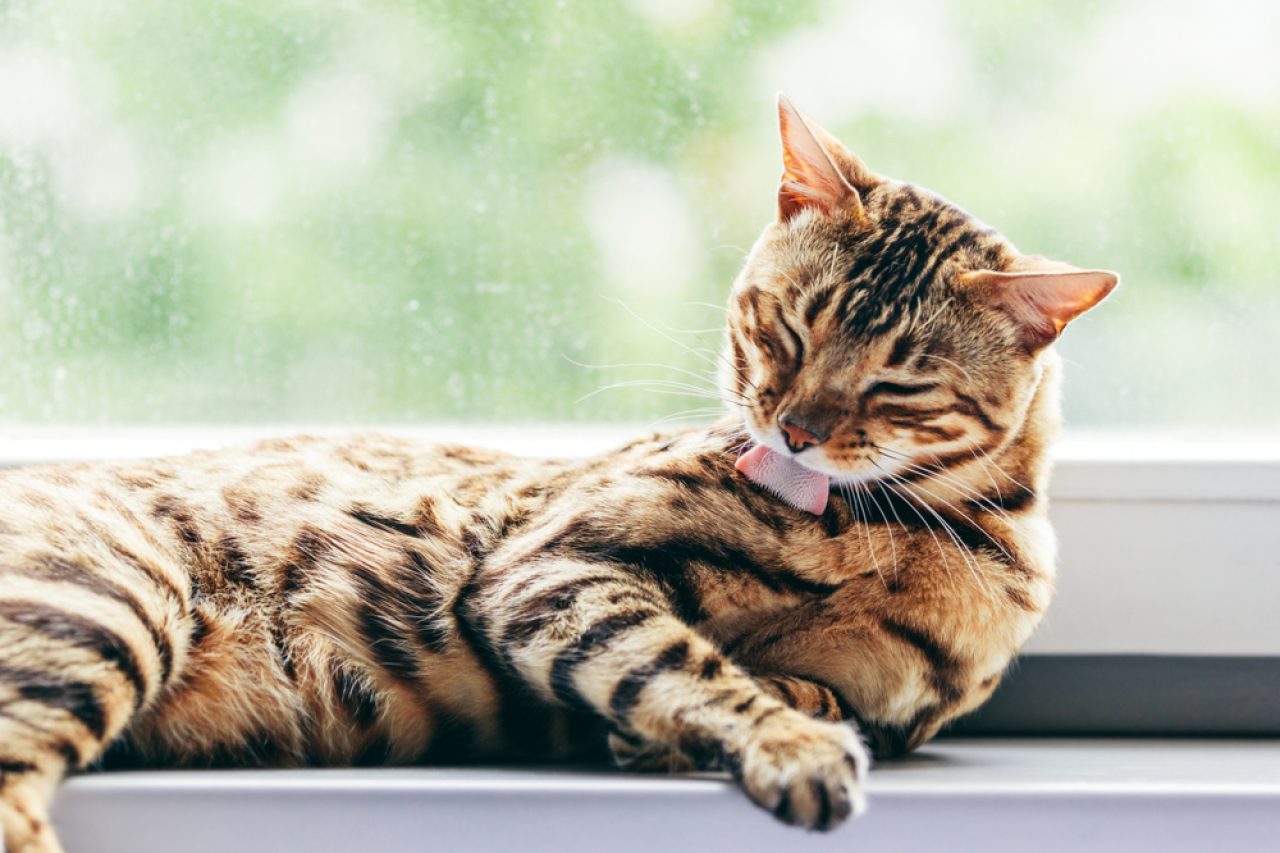
Bengals might throw tantrums and wreak havoc because of something that happened to them when they were little, something they’re going through at the moment, or something they’re feeling.
Make sure you provide your Bengal with plenty of affection and appreciation. Not only are you going to show her that she doesn’t have anything to be aggressive over, but you’re going to understand better whether that’s the reason she’s been aggressive.
Don’t shy away from giving her cuddles, massaging her beans, grooming and brushing her fluff, and surprising her with treats. And don’t worry, on the off chance that she doesn’t take to any of these strategies, you can always consult with a veterinarian or seek help from an animal behaviorist. Good luck!
